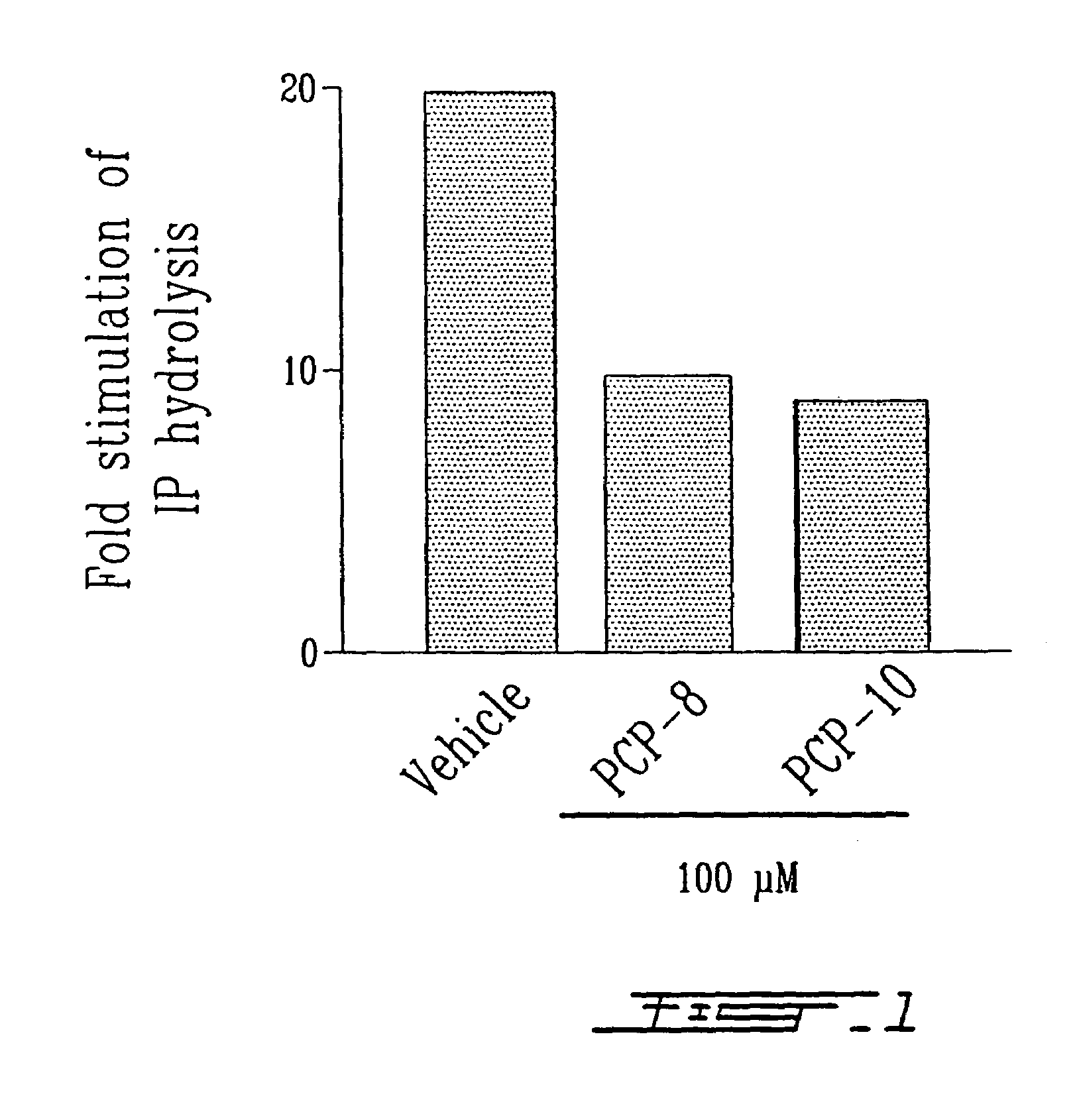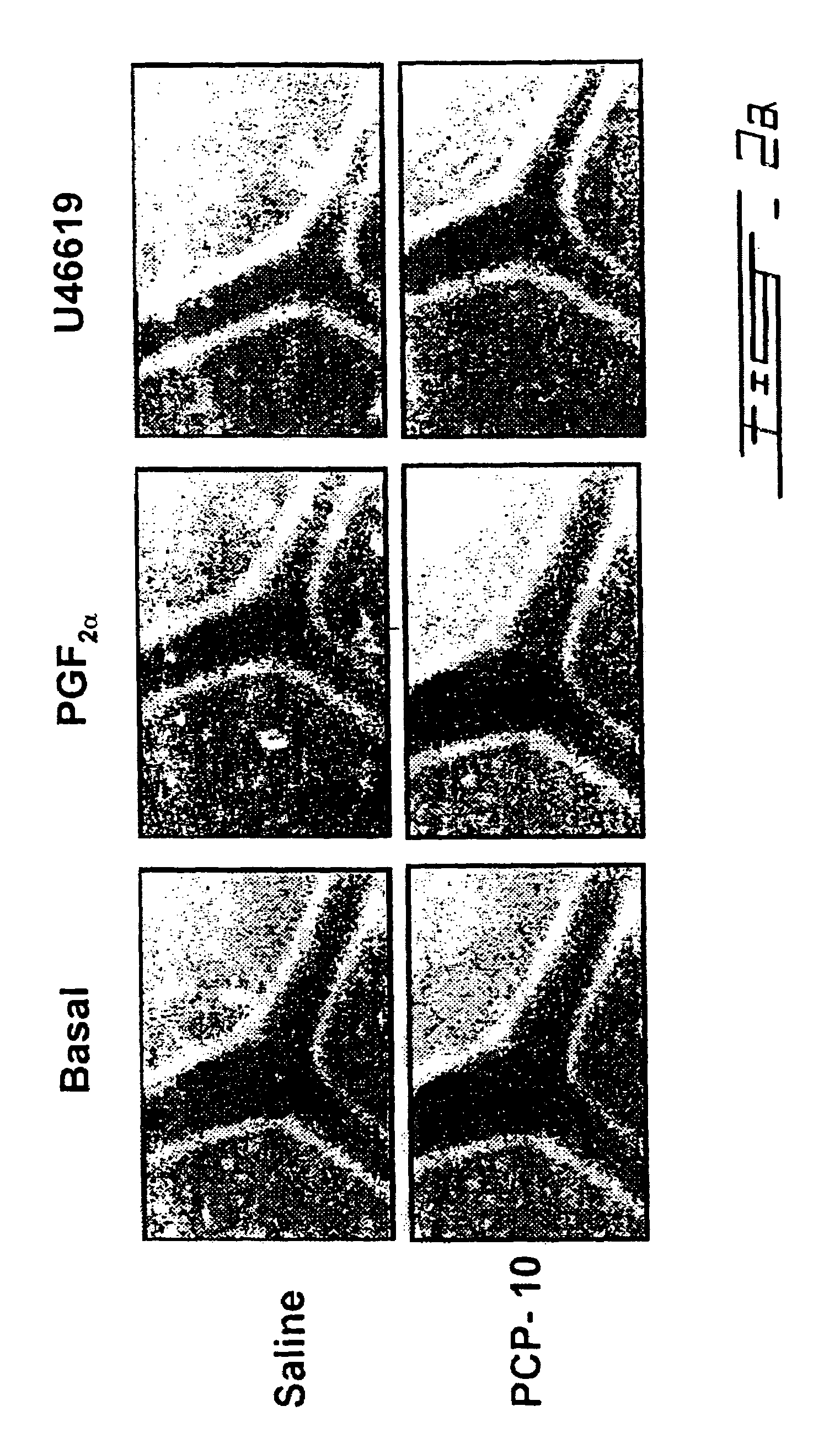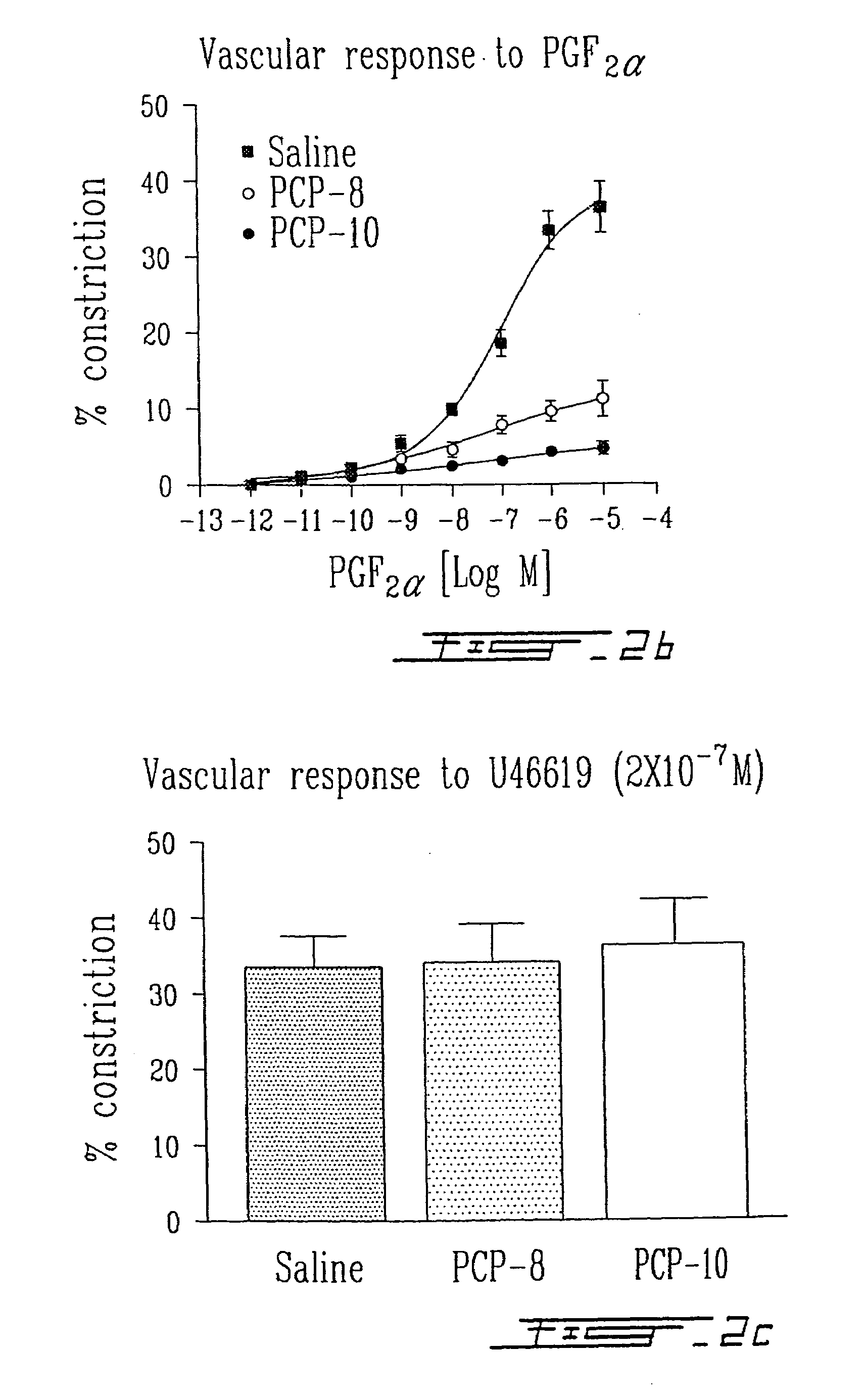Peptide antagonists of prostaglandin F2α receptor
a technology of prostaglandin f2 and peptide antagonists, which is applied in the direction of hormone receptors, animal/human proteins, biocide, etc., can solve the problems of limited use of antagonists of fp receptors directed to the ligand binding site, affecting the effect of fp receptors, and affecting the delivery of fetuses, so as to prevent premature delivery of fetuses, hamper uterine contractions, and reduce pain
- Summary
- Abstract
- Description
- Claims
- Application Information
AI Technical Summary
Benefits of technology
Problems solved by technology
Method used
Image
Examples
example i
Effects of Peptides, PCP-8 and PCP-10, on Ligand-Induced Phosphoinositide Hydrolysis in Mammalian Cells Overexpressing the FP Receptor
[0051]Both PCP-8 and -10 were tested in HEK293 cells expressing the human FP receptor. For this purpose, HEK 293 cells stably expressing human FP receptor were plated in 12-well plates in DMEM medium containing 10% fetal bovine serum, penicillin (10 U / ml) and streptomycin (10 μg / ml) and cultured in a humidified atmosphere containing 5% CO2 at 37° C. After the wells were 80% confluent, the cells were labeled with 2 μCi / ml of [3H]-myo inositol overnight. Next day, the cells were washed once with PBS, and incubated in 0.5 ml of Kreb's buffer containing 10 mM LiCl and indicated concentrations of PCP peptides for 30 min. PGF2α at 1 μM was added to the cells and the incubation was carried out for an additional 30 min. The cells were solubilized with 0.1 N NaOH for 10 min and neutralized with 0.1 N formic acid. The lysates were collected and 1 ml each of met...
example ii
Testing PCP Peptides in Porcine Eyecup Model of Ex Vivo Vasomotricity Assay
[0054]In order to see if the peptides could inhibit FP function using an ex vivo model, we chose porcine eyecup model, an ex vivo assay of vascular constriction in porcine retinas which we previously described and validated (Li et al., 1996 J. Pharmacol. Expt. Therapeut. 278: 370–377; Li et al., 1997 Am. J. Physiol. 273: R1283–90; Abran et al., 1997 Am. J. Physiol. 272: R995–1001). Since FP receptor densities in newborn vasculature are minimal due to down regulation by high levels of circulating prostaglandins in the perinatal period, the newborn pigs were treated with a prostaglandin synthetase blocker, ibuprofen (30 mg / Kg of bodyweight / 8 h for 24 h) to increase the density of the receptors as well as their vasomotor effects. By inhibiting circulating prostaglandins, we were able to show potent inhibition of FP receptor-mediated second messenger synthesis as well as FP-mediated vascular constriction in this ...
example iii
Testing Peptide Variants of PCP-8 in Porcine Eyecup Model of Ex Vivo Vasomotricity Assay
[0059]In order to understand the structural requirements of PCP-8 in its inhibitory action on PGF2α-induced vasoconstriction, different amino acids in PCP-8 sequence were replaced with other D- or L-amino acids and the resulting peptides were chemically synthesized and tested in porcine eyecup model of ex vivo vasomotricity assay. These peptide variants are listed in Table 1.
Table 1
Amino Acid Sequences of Peptide Variants of PCP-8 and their Inhibitory Potency in Porcine Eyecup Model Of Ex Vivo Vasomotricity Assay
[0060]
% Vasomotorresponse% inhibitionPeptide(of maxof maximalPeptideSEQPCP-constriction)1responsesequenceID NO:850.050.0ilghrdyk11020.080.0wedrfyll21436.064.0YQDRFYLL31320.080.0ILGHRDYK1313.723.876.2ILAHRDYK413.846.853.2ILaHRDYK1413.1113.087.0ILGFRDYK513.1336.963.1ILGHKDYK613.1440.359.7ILGHRNYK713.1830.070.0ILGHQDYK813.2049.650.4ILGHRDY-amide913.2146.253.8ILGHRDYK-amide1513.2216.683.4ILGW...
PUM
| Property | Measurement | Unit |
|---|---|---|
| bed volume | aaaaa | aaaaa |
| bed volume | aaaaa | aaaaa |
| length | aaaaa | aaaaa |
Abstract
Description
Claims
Application Information
 Login to View More
Login to View More - R&D
- Intellectual Property
- Life Sciences
- Materials
- Tech Scout
- Unparalleled Data Quality
- Higher Quality Content
- 60% Fewer Hallucinations
Browse by: Latest US Patents, China's latest patents, Technical Efficacy Thesaurus, Application Domain, Technology Topic, Popular Technical Reports.
© 2025 PatSnap. All rights reserved.Legal|Privacy policy|Modern Slavery Act Transparency Statement|Sitemap|About US| Contact US: help@patsnap.com



